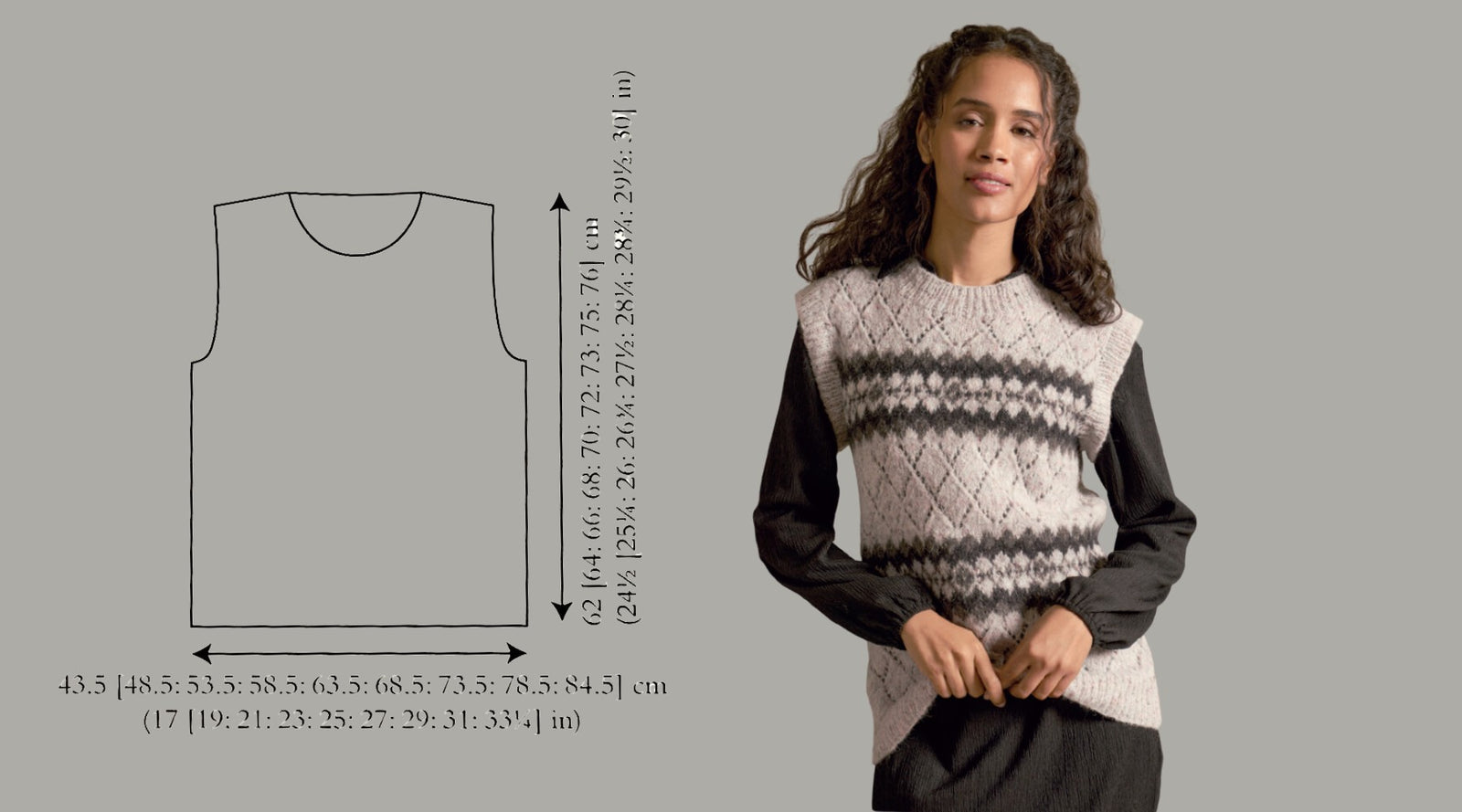Your Cart is Empty
Free shipping on all domestic orders over $150
Free shipping on all domestic orders over $150

Look at the schematic, not the model
September 25, 2023 2 min read
Ginni is knitting Banner, a beautiful sample in the new Rowan Magazine. A tunic length vest worked in Fine Tweed Haze, it features alternating bands of colorwork and lace. It is a truly stunning piece and so very Ginni.
She was showing her progress at our team meeting last week, and she asked if I minded if she cut the shoulder line in a bit. In the picture, Banner appears to be a dropped shoulder, which uses a wider shoulder to create a little cap sleeve. In reality, it has the curved armhole shaping used for set-in sleeves, so the shoulder line really shouldn’t extend out past the shoulder.
I said, it was fine, of course, if she wanted to change the width. I mean, she’s the one who'll be wearing this garment, and I want her to feel good about the fit and style.
Then all of a sudden I remembered the trap so many knitters fall into.
Deciding to modify the pattern based on how the garment looks on the model.
You can’t just look at the picture of the model wearing a jacket and decide to shorten or lengthen it based on how it looks on her. You can’t even look at a real person wearing a garment and make decisions about fit and length for you.
For example, you might see a sweater coat on a model that hits her just above the knee, but you would prefer the garment to fall right below your seat, so you decide to shorten it by 4”.
Sounds reasonable, right? But you have no idea how tall that model is, whether she has a short torso, long legs, whatever. We simply don’t know someone else’s measurements. Even if the pattern says, model is 5”10 and wears a US size 6, you don’t know how those 5’10” are distributed between leg and torso. And believe me, it matters.
So what should you do?
You have to know your own measurements, and you have to look at the schematic.
Only then, will you have actual data you can use to make decisions about whether you want to modify the pattern.
Ginni had, of course, already done this when she mentioned it so me, because she’s a pro - what we call a Level 5 in Sweater Eweniversity. She knows what to look for, how to find it even when there isn’t a schematic, and how to make the changes she needs in a lace and colorwork pattern. Pretty cool, huh?
If you are interested in becoming that kind of sweater knitter, you will love Club Crazy for Ewe and our new Sweater Eweniversity that takes you from never having knit a sweater to someone who can knit sweaters that fit perfectly time after time. I am refurbishing Club Crazy for Ewe, and it will be ready later this fall. Sign up here to be on the waitlist when registration opens again.
Leave a comment
Subscribe
Sign up to get the latest on sales, new releases and more …

